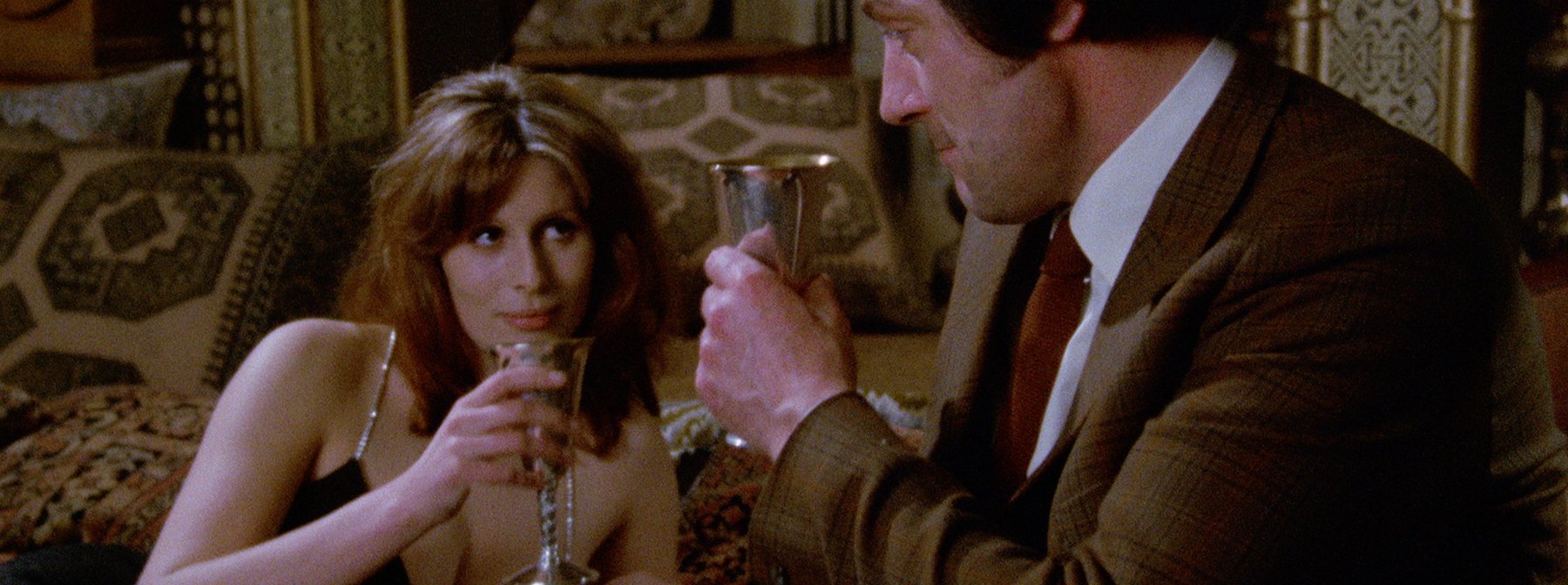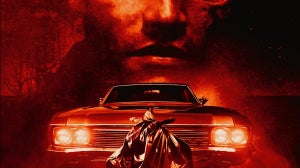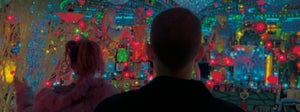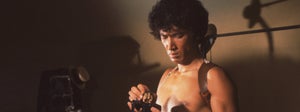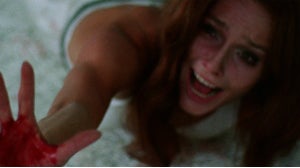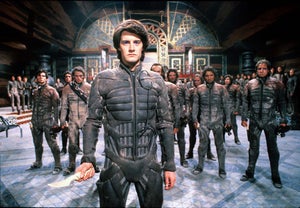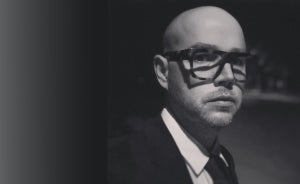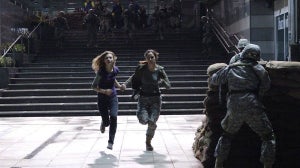
Surely the words ‘don’t go into the cellar’ have never felt more necessary than in the case of the José Larraz blood-sucking sex romp, Vampyres (1974). Replacing some of the more obvious Hammer Horror style gothic trappings with a disturbingly bleak take on those famous creatures of the night, the Spanish-born director was able to offer a nastier version of the British chiller by simply casting a Foreigner’s gaze over the kind of proceedings which by that time, to some, had started to become a little stale. And part of that foreign viewpoint, also came with added un-redemptive sleaze and titillation. New comers to his work would do well to examine The Coming of Sin (1978). With its seductions, nightmares and dark secrets, it provides a handy template that can be followed in almost all of his films.
However, what gave the movies that he made in England, their more distinctive flavour, was not born out of his desire to overly ‘European-ise’ them but to accept and seemingly revel in the elements which made them unmistakably the products of this dull, rainy island. You can almost smell the dampness, the carbolic soap, or the tang of HP Sauce. As with UK filmmaker Nicolas Roeg or the Canadian Ted Kotcheff, when they ventured into Australia to make Walkabout (1971) and Wake in Fright (1971) respectively, they too were able to examine a country and its environs with fresh eyes, understanding its devastating scale and small-town claustrophobia to unpick its character via savagery and sexual awakening storylines.
Likewise, Larraz offers up an odd kind of no-frills horror. As with Whirlpool (1970), Symptoms (1974), and the aforementioned Vampyres (1974) there is scant regard for over-the-top theatrics or supernatural guff, instead we get an edgy and sexually explicit dive into the seedier side of 70s Britain. Here is an enclave of English-set horror which is decorated not by swirling velvet cloaks, dry-ice, or crass Victorian villainy, but with bubbling pans of baked beans, shitty caravans, and an overwhelming sense of grot. This is not to say that he doesn’t also lean toward the more established tropes particularly in his use of specific locations, as with Harefield Grove, a shambling 19th-century pile which he featured in two of his productions.
https://www.youtube.com/watch?v=SFfqlgnpWHU
But there is no escape from the never-ending downward spiral which his films seem to illicit. It’s the kind of tense cruelty that claws at you long after the reels have stopped spinning. It’s the blood spatter across the chest of the pasty-faced, pock-marked male victim, it’s the horrid clothing choices, it’s the ground in feel, the murderous kitchen sink scenarios, the smoking, the endless smoking and it’s the knowledge that while some will get out of here alive, they will never be the same. Symptoms, for instance, arguably his most deliberately nightmarish effort, often feels like the horrid ending to one of the grislier Public Information Films we were forced to watch as kids. Its lakeside setting and inclusion of Angela Pleasance leads us to believe that any minute her father Donald will provide the voiceover giving it his best Spirit of Dark and Lonely Water tones.
And while it’s true that Larraz, like many jobbing directors at that time, would wander into established territory to try and cash in on proven marketable ideas, as with his The Last on the Left (1972) inspired The House that Vanished (1973) or his later 80s slasher movies, his originality and confidence seem to outweigh any sense of the derivative, steering his work away simply being copycat pieces. But whether making films in Britain or the sunnier climes of California, his very particular brand of darkness follows him working its way into a good proportion of his impressive back catalogue.
Edge of the Axe (1988), for instance, a video-nasty era, masked killer romp, is in keeping with many of those cheaply churned-out copies of Friday the 13th (1980) and the like, and yet Larraz, well-versed in the use of setting, mise-en-scène and a real sense of place, uses the cheapness of the production to sell his idea, rather than hamper it. This kind of hack-and-slash production is easy to get wrong, and occasionally, that ‘wrongness’ can be more than entertaining but to take us somewhere we perhaps don’t want to go you have to first assert your art or authority otherwise no-one will buy your dime store bogeymen tales of gratuitous violence.
https://www.youtube.com/watch?v=AL_oqPatoVA&pp=ygUXd2hpcmxwb29sIHRyYWlsZXIgYXJyb3c%3D
Bob Clark, when making his superb proto-slasher Black Christmas (1974), for example, very much understood this, given the same plot and set-up, a lesser director might have produced something too clean or too nasty, missing the point of the bits in between that provide the right amount mundanity for the outrageousness to dance all over. This is key to the work Larraz too, without those grubby, real-life moments which ache with debilitating grimness, none of the horror means anything. You need to drop the acid tab into the chipped mug of builder’s tea to fully understand its magical properties.
And yet another key aspect of his work is that it creates deeper wounds than more familiar films from that period because they play with our (fading) grasp of decency. There are no answers here, no true villains or heroes, just victims. Victims of time, circumstance, or the growing delusion in another character’s mind. It’s a cold ambiguity that will tend to take the words out of your mouth as you try and fail to make sense of it all. It’s simple, complex, lurid, and subtle or all that same moment. His work is brutal, casual awkward, and occasionally ‘of its time’ but it’s unmistakably his. Whirlpool especially, with its superb score by Stelvio Cipriani provides a supremely unsettling glimpse into a cracked world. A sordid and deprived existence that plays at the edges of late 60s society with its hedonism and pleasure-seeking and the peeling wallpaper of the oncoming new decade, with its strikes, teenage pregnancies, gutter press titillation and real-life serial killers like the Yorkshire Ripper. It’s a postcard written by a foreign visitor and what’s being written is far from complimentary.

